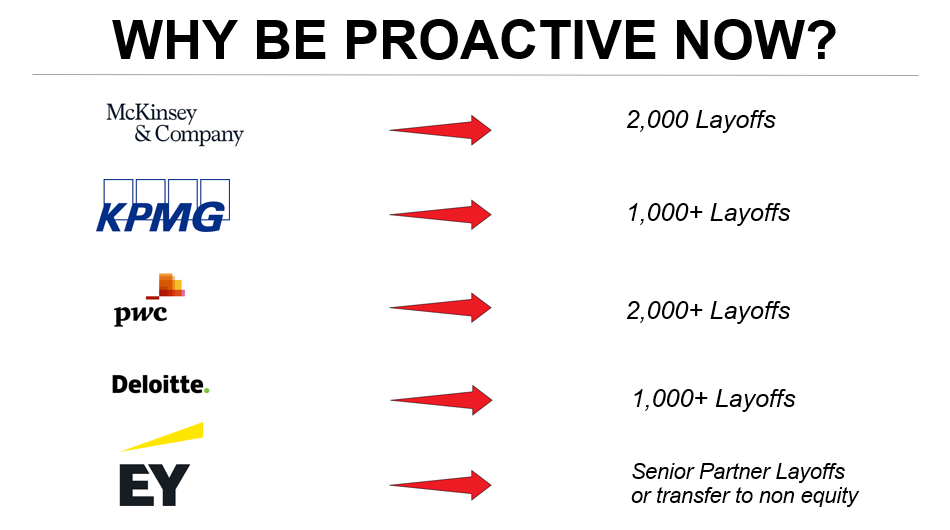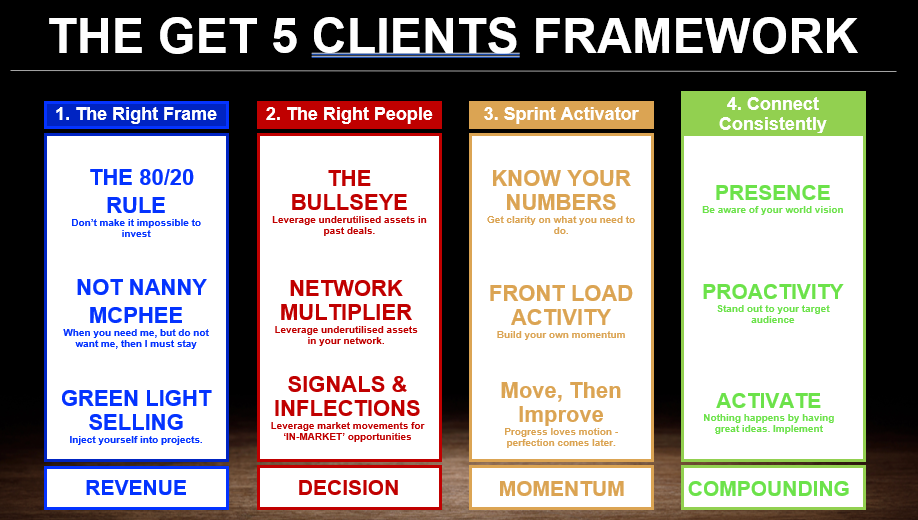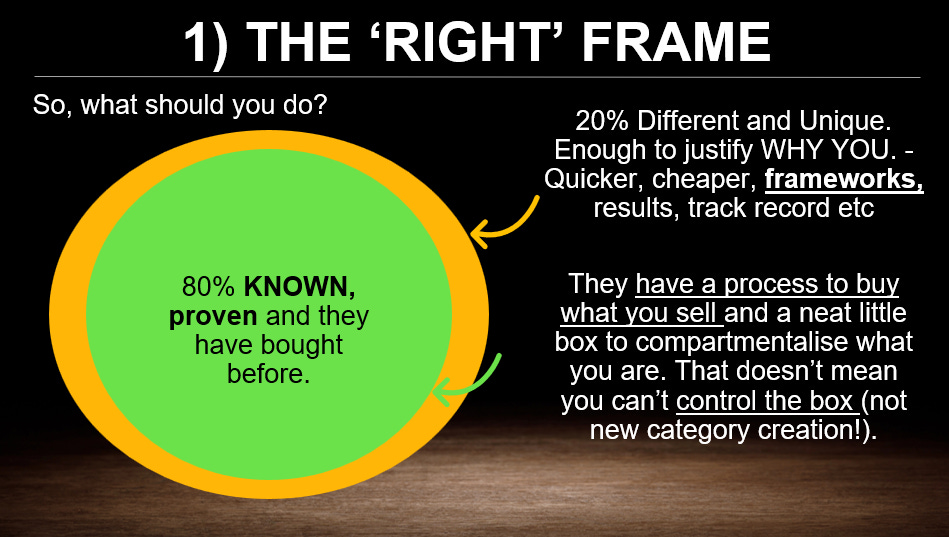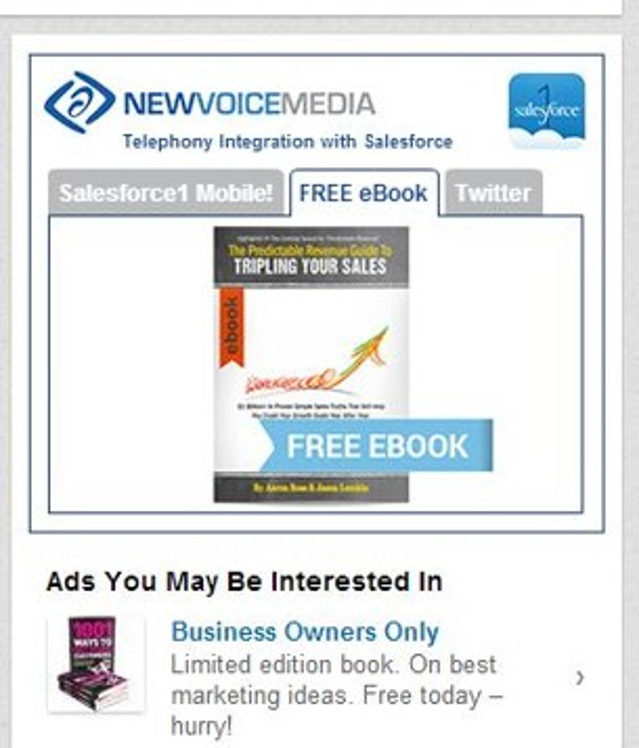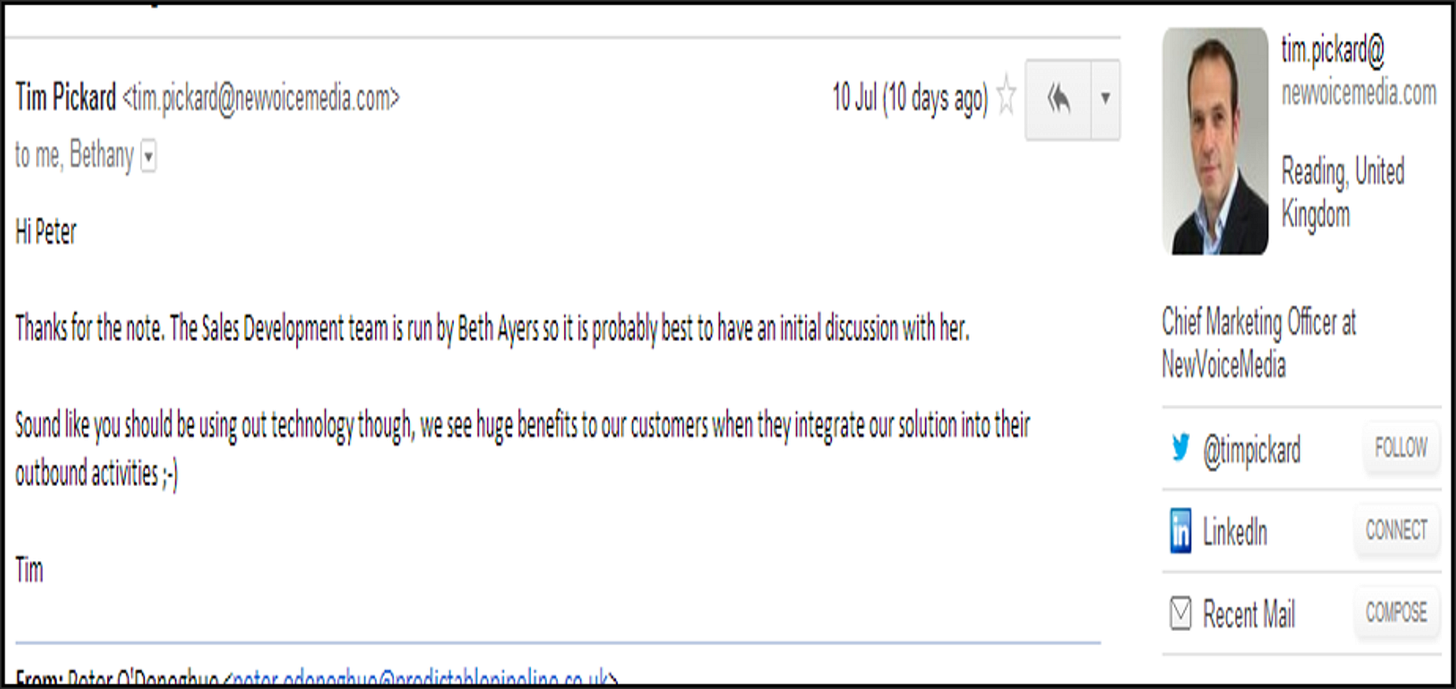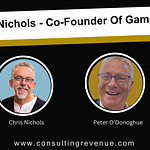Consulting is getting weird right now.
McKinsey, KPMG, PWC, and Deloitte have all laid off thousands of people. EY has done the unthinkable and moved senior partners to non-equity positions. Tech layoffs have put 150,000+ skilled people into the job market, and many are thinking “hey, maybe I’ll do consulting.”
But boutique consulting firms are actually growing their revenue. The market is there. The opportunity is real.
The difference? The consultants who are winning aren't just sitting around waiting for referrals.
The difference? The consultants who are winning aren’t sitting around waiting for referrals.
I’ve spent 15 years working with consultants, and I’ve noticed something: most of them are terrified of proactive business development. They’d rather write a book, redesign their website, or create the world’s most perfect LinkedIn profile than actually reach out to potential clients.
Here’s how to get your next five consulting clients in 30-90 days without feeling sleazy or desperate.
The Four-Part Framework
The Right Frame: Getting positioned to win new business
The Right People: Figuring out who to talk to (it’s probably not who you think)
Sprint Activator: Creating momentum fast
Connect Consistently: Building ongoing results
Part 1: The Right Frame
Most consultants shoot themselves in the foot before they even start. They try to be too unique, too revolutionary, too special.
The 80/20 Rule for Consulting Positioning
When you’re targeting mid-market or enterprise clients, you need to fit into their world. Position yourself as:
80% something they already know and buy
20% different in a way that matters to them
Bigger organisations need to mentally “file” you somewhere. They need an existing buying process they can use. A familiar category to put you in.
I know everyone on LinkedIn is yelling about being unique and “category design,” but unless you’ve got a mountain of cash and a year to burn educating the market, that’s a recipe for starvation.
Your “special sauce” can simply be that you’re faster than alternatives, more cost-effective, have a proven methodology, or can point to specific results.
The "Not Nanny McPhee" Principle
Remember that movie? Nanny McPhee’s catchphrase was:
“When you need me but do not want me, then I must stay.”
That might work for a magical nanny. Terrible consulting strategy.
Don’t try to sell things that clients need but don’t want, require changing deep-seated beliefs, or need months of education before they’ll buy.
I had a potential client once who was trying to sell a solution that would save companies millions (their words), but the very people who would need to approve it didn’t want the solution. Guess how that went?
Unless you’ve got magic powers and a long cash runway, don’t make your life harder than it needs to be.
Unless you've got magic powers, or amazing skills at sales and changing beliefs, oh, and a long cash runway, don't make your life harder than it needs to be.
Green Light Selling
This is my favorite approach for new consultants or those struggling to get traction. Instead of trying to create new projects from scratch, find ones that are already approved (”green lit”) and inject yourself into them.
The playbook:
Get into conversations (more on how shortly)
Ask about projects already approved for the next 6-24 months
Position yourself as reducing risk or enhancing results
Try these four questions:
“What projects have been green lit for the next 6-24 months?”
“How confident are you that they’ll hit their objectives?”
“What are people worried might go wrong?”
“What happens to you personally if they don’t succeed?”
Then follow up with: “If I had ideas to help reduce those risks, would you be open to hearing them?”
When you spot an opportunity, use this transition:
“Steve, sounds like you might be facing some challenges around [the pain point] and that could lead to [bad consequence]. I might have some ideas that could mitigate the risks on this project. Would it make sense if I go away, put my thinking cap on, and come back with some thoughts? How does next Wednesday at 3 look?”
Nothing revolutionary here. But it works because it fits into the client's existing priorities rather than trying to create new ones.
Part 2: The Right People
This is where most consultants get stuck. They either target people they can't reach or don't know how to approach the ones they can.
Instead of asking "who should I target?", flip the question:
"What can I talk about with buyers I can easily reach?"
Sources Of Clients
This is where most consultants get stuck. They either target people they can’t reach or don’t know how to approach the ones they can.
Instead of asking “who should I target?”, flip the question:
“What can I talk about with buyers I can easily reach?”
The Bullseye Method
If you’ve completed any projects in the last couple of years, they’re gold mines for new business. Target similar prospects in concentric circles:
Inner Circle: Your client’s supply chain
Middle Circle: Their competitors (if ethical)
Outer Circle: Decision-makers who’ve moved to new companies
The Bullseye Method
If you've completed any projects in the last couple of years, they're gold mines for new business. Target similar prospects in concentric circles:
Inner Circle: Your client's supply chain
Middle Circle: Their competitors (if ethical)
Outer Circle: Decision-makers who've moved to new companies
I once advised an ESG consultancy that had just finished a project with a major UK retailer. They were stressing about lead generation, and I asked them a simple question: "How many of their 300+ suppliers have you approached?" The light bulb went on, and the last I heard, they were booked solid for two years.
Here's an email template that works for approaching competitors:
Subject: Question about staff churn at Pepsi
Hi Jane,
I don't know how relevant this is to you, but we just completed a project with Coke where we reduced staff churn from 28% to 18% in the crucial first three months of new hires. This is on track to save them $700K this year and every year after.
The specific purpose of this email is to find out how relevant the challenge of staff churn is to Pepsi. Feel free to say no, but do you want to jump on a quick call to run through some ideas I have about how this specialist knowledge we developed could help Pepsi?
Regards,
[Your name]The "I don't know how relevant this is" opener is deliberate psychology - it makes people curious to find out if it IS relevant to them.
The Network Multiplier
"But I don't have a network," I hear you say.
Yes, you do. You've just never organised it properly.
Try this:
Download your LinkedIn connections (yes, all of them)
Categorize them by:
Relationship strength (A = strong, B = medium, C = weak)
Decision-making ability (1 = decision-maker, 2 = influencer, 3 = other)
Start with your A1s, then B1s, then A2s, and so on
Reach out to your network, just don't just pitch them. You can take an new idea or insight to them, ask for their input into something new you are working on or use what I call "Client Insight Interviews" [a full training course on this is included in my coaching] - structured conversations where you learn about their challenges first, then develop solutions based on what they tell you.
Some of my clients use this as their ONLY business development method, and it works because it's consultative from the very start.
It’s exactly what Pete did when he started his consulting business and ended up creating his ‘offers’ based on what his network told him he needed. He also booked £172K in under 8 weeks.
Signals and Inflection Points
The market is constantly sending signals about who needs help. You just need to tune your antenna.
Recruiting Signals:
Companies hiring for director-level positions: Offer them a "Plan B" - your help as a fractional resource or support during the hiring process
Organisations hiring fractional roles: They probably need consulting help too
Companies recruiting lots of admin staff: Position how AI or automation could save them money
LinkedIn makes this ridiculously easy to spot. Set up alerts for your target companies' hiring activities.
New Role Signals:
People announcing new leadership positions: Offer a resource like "First 90 Days Checklist" for their role
I had a client who built their entire culture transformation practice just by targeting senior executives who had moved into new roles. They knew these leaders would be looking to make an impact, and they positioned their services to help them do exactly that.
Part 3: The Sprint Activator
Knowledge without action is useless. This is where most consultants fall down - they know what to do but never actually do enough of it.
Know Your Numbers
Let's do simple math:
Want 5 clients at £50K each
If your close rate is 10% (which is low for consulting), you need 50 proposals
That requires about 100 meaningful conversations
Which means scheduling about 143 calls (accounting for no-shows)
At a 20% response rate, you need to contact 750 people
You can spread that out:
6-month sprint: 6.25 contacts per day
3-month sprint: 12.5 contacts per day
1-month sprint: 37.5 contacts per day
Pick a timeframe that works for you, but be honest about the numbers.
Front-Load Your Effort
I laugh when I see LinkedIn posts about "get clients in just 20 minutes a day!"
That's nonsense. If you're starting from zero or struggling, you need massive action for a defined period to create momentum.
Block out 8 weeks of intensive effort. Once you've got momentum, then you can scale back to maintenance mode.
Move, Then Improve
Most consultants get caught in analysis paralysis. They spend weeks organising their contact list before reaching out to anyone.
Don't do that. Break it down:
Process 250 contacts
Start reaching out immediately
Process the next 250 while your first outreach is happening
Keep going
Perfect is the enemy of done. And done is what gets you paid.
Part 4: Connect Consistently
Most consultants think they have a positioning problem, but what they actually have is a PROXIMITY PROBLEM - they're not close enough to the market.
Be Present and Aware
Back in 2014, I noticed a LinkedIn ad from a company called New Voice Media promoting a book about outbound sales teams. Instead of bookmarking it for later (which means never), I immediately:
Found email addresses for their leadership team
Sent them personalized outreach
Got responses within 30 minutes
Had a signed contract a week or 2 later
That led to hundreds of thousands in consulting revenue [they promoted my content to their audience of my ideal clients] - all because I was paying attention and took immediate action.
Use Multi-Channel Approaches
Email and LinkedIn aren't the only options. Some of my most successful clients use:
Video mailers (physical packages with embedded video screens)
"Lumpy mail" that stands out in the post
Custom objects sent to high-value prospects (one consultant sends swords to CEOs - seriously. Not my client I must say)
Dan Waldschmidt [I found him via Stu Heinecke] tracked declining revenue in large organisations and sent custom swords to CEOs with notes about "cutting through" their challenges. Cost him $150 each. Return? Massive.
Campaign Example: The Research-Led Approach
Campaign Example: The Research-Led Approach
Here’s a campaign that generated £35M in pipeline opportunities in under 8 weeks for one of my technology clients:
A tech consultancy commissioned research on disruptive trends in their clients’ industry. They got the research company to list the research for sale at £2.5K.
Called C-level executives offering executive briefings
Left 10 copies of the research (perceived value: £25K) for distribution around the organisation
Naturally transitioned to how their tech prevented the risks identified
Today, you can replicate this with AI-generated research at a fraction of the cost.
Common Obstacles
“I Don’t Have Money”
Join Jorn, who paid for business development training himself when his employer wouldn’t. Using low-cost tactics, he soon had COOs of major airlines responding to him, saying “Sorry for the wait.”
Good business development doesn’t have to be expensive.
“I Don’t Have Time”
Business development gives you back time eventually. Yes, there’s an upfront investment, but once you’ve cracked it, you’ll have better clients, higher rates, and more predictable income.
“I Don’t Have a Clear Offer”
Dr. Peter Williams came to me having never consulted before. We ran Client Insight Interviews with his network, found out what they needed, and built his offer around that. He sold it back to the very people who told him what they wanted.
“I’m Too Shy/Introverted”
Business development works for all personality types. What matters isn’t being extroverted — it’s your desire to serve and add value. Some of the best business developers I know are quiet, thoughtful, and analytical.
If you’ve read this far, you probably recognise the problem. You’re good at the work. You’re just not consistent at finding it.
The difference between consultants who struggle and those who thrive isn’t talent or market conditions it’s showing up to business development when you don’t feel like it.
Your next five clients are out there. The only question is whether you’ll reach out.
If you want help building this into a system:
I work with consultants who are excellent at delivery but inconsistent at business development. We combine AI that surfaces opportunities in your network with coaching that makes sure you actually follow through.
No cold outreach. No content treadmills. Just a system for finding clients through relationships you already have.


